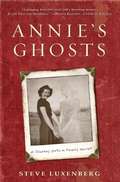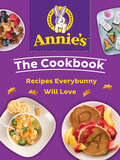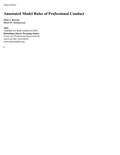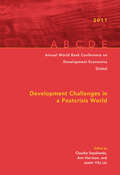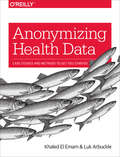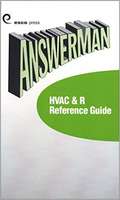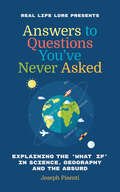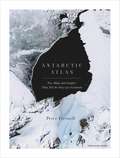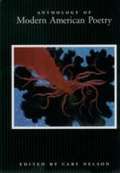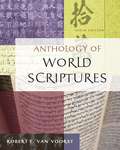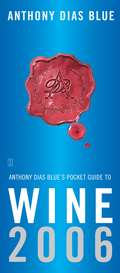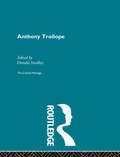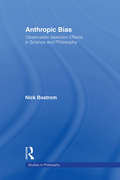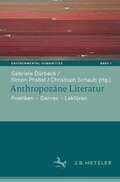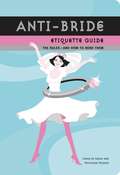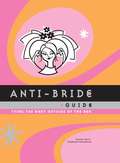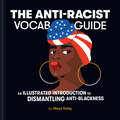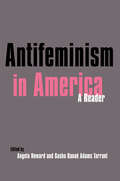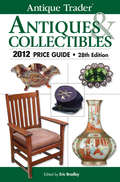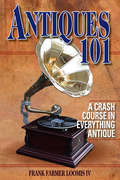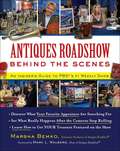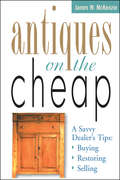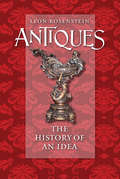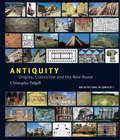- Table View
- List View
Annie's Ghosts: A Journey into a Family Secret
by Steve LuxenbergCombining the power of reportage with the intrigue of mystery, "Annie's Ghosts" explores the nature of self-deception and self-preservation. The result is equal parts memoir and riveting detective story as one son seeks to uncover family secrets.
Annie's The Cookbook: Recipes Everybunny Will Love
by Annie'SFrom Annie’s Homegrown, the #1 national organic kids' food brand, a joyful cookbook of 70 easy, comforting, yummy recipes for breakfast, snacks, lunch, or dinner and even dessert that the whole family will love. Annie’s Homegrown has a mission to cultivate a healthier, happier world by spreading goodness through nourishing foods, like their Mac & Cheese and Bunny Grahams—and now in this cookbook of 70 yummy and comforting recipes. Chapters include fun dishes that are sure to be beloved by every bunny—kids and adults alike:Fruity Bunny Cinnamon RollsSkillet Breakfast Mac & Cheese BakeWatermelon Birthday Cake ShakesVeggie Nuggets with Barbecue-Hummus Dipping SauceBeef and Veggie LasagnaMac & Double Cheese SticksFrozen Cocoa Bunny-Banana PopsRaspberry-Banana Split ParfaitsBunny and Carrot BrowniesEach chapter includes a feature to add more joy to cooking and eating, including Making Breakfast Together, Bento Boxes for Joyful Lunch Surprises, Yummy Ways to Change Up Mac & Cheese, and Fun Things to Do Between Dinner and Dessert. And throughout, you’ll find Farm to Fork Facts that chronicle healthfully grown food and its journey from the farmers who grow our ingredients to the dishes on our table.
Annotated Model Rules of Professional Conduct
by American Bar Association Ellen J. Bennett Helen W. Gunnarsson Center for Professional Responsibility (American Bar Association) Staff House of Delegates StaffAn essential resource on lawyer ethics, revised and updated: The Annotated Model Rules of Professional Conduct is the ABA's definitive single-volume resource for information about how courts, disciplinary bodies, and ethics committees apply the lawyer ethics rules. <p><p>The Ninth Edition incorporates all of the amendments the ABA has made to the Model Rules of Professional Conduct through February 2019—including the 2018 amendments to the advertising rules and new Model Rule 8.4(g), prohibiting discrimination and harassment in conduct related to the practice of law. <p><p>Comprehensive and authoritative: Each chapter begins with the rule and its comment, a link to charts comparing each state's rule with the Model Rule, and then presents a detailed discussion of how the rule has been applied. The book gives citations to thousands of court cases, ethics opinions, law review articles, and internet resources, as well as treatises, the Restatement (3rd) of the Law Governing Lawyers, and the legislative history of the Model Rules.
Annual World Bank Conference on Development Economics 2011
by Justin Yifu Lin Claudia Paz SepulvedaThe Annual World Bank Conference on Development Economics 2011: Development Challenges in a Post-crisis World (ABCDE) presents papers from a global gathering of the world's leading development scholars and practitioners held May 31 - June 2, 2010. Paper themes include: Environmental Commons and the Green Economy, Post-crisis Development Strategy, the Political Economy of Fragile States, Measuring Welfare, and Social Programs and Transfers. Keynote addresses: Elinor Ostrom: Overcoming the Samaritan's Dlimemma in Development Aid -- Torsten Persson: Weak States, Strong States, and Development -- Joseph Stiglitz: Learning, Growth, and Development -- Partha Dasgupta: Poverty Traps --
Anonymizing Health Data: Case Studies and Methods to Get You Started
by Luk Arbuckle Khaled El EmamUpdated as of August 2014, this practical book will demonstrate proven methods for anonymizing health data to help your organization share meaningful datasets, without exposing patient identity. Leading experts Khaled El Emam and Luk Arbuckle walk you through a risk-based methodology, using case studies from their efforts to de-identify hundreds of datasets.Clinical data is valuable for research and other types of analytics, but making it anonymous without compromising data quality is tricky. This book demonstrates techniques for handling different data types, based on the authors’ experiences with a maternal-child registry, inpatient discharge abstracts, health insurance claims, electronic medical record databases, and the World Trade Center disaster registry, among others.Understand different methods for working with cross-sectional and longitudinal datasetsAssess the risk of adversaries who attempt to re-identify patients in anonymized datasetsReduce the size and complexity of massive datasets without losing key information or jeopardizing privacyUse methods to anonymize unstructured free-form text dataMinimize the risks inherent in geospatial data, without omitting critical location-based health informationLook at ways to anonymize coding information in health dataLearn the challenge of anonymously linking related datasets
AnswerMan HVAC&R Reference Guide (AnswerMan Pocket Reference Books)
by Esco InstituteThe AnswerMan Pocket Reference Guide provides fast and easy answers that would otherwise require a library of textbooks. The AnswerMan Pocket Reference Guide is a handy pocket sized reference manual that every air conditioning and refrigeration technician MUST have. AnswerMan Pocket Reference Guide isn't just a book, it's a tool that you'll use everyday. This book is a compilation of charts, graphs, formulas, and troubleshooting guidelines.
Answering Jewish Objections to Jesus - Volume 5
by Michael L. BrownMichael Brown provides a comprehensive refutation of the traditional [orthodox] Jewish concept that there is a binding, authoritative Oral Law going back to Moses. While showing great respect for his people's traditions, Brown dispels the idea that only traditional Jews can rightly understand the Hebrew Scriptures. He demonstrates that the written Word alone carries absolute authority, and when there is a conflict between the Bible and tradition, Jews are called to follow the Bible. This study will revolutionize the lives of both Jewish and Christian readers. Brown discusses other topics besides problems with the Oral Law such as showing how Jesus is the Jewish Messiah. Brown supports his ideas with extensive documentation from Christian, Jewish, and Messianic Jewish scholars, and from other sources. Even for those readers who do not practice Judaism, Christianity, or Messianic Judaism, this book will enlighten their understanding of what Traditional Jewish people believe about Jesus and Christianity. Michael L. Brown (Ph.D., New York University) is a Jewish believer in Jesus who has been active in dialogue, debate, and interaction with rabbis and countermissionaries for more than thirty-five years. He is the founder and president of FIRE School of Ministry in Concord, North Carolina, and has served as a visiting or adjunct professor at Trinity Evangelical Divinity School, Denver Theological Seminary, Fuller Theological Seminary, Gordon Conwell Theological Seminary (Charlotte), The King's Seminary, Southern Evangelical Seminary, and Regent University School of Divinity. He is the author of twenty books, which have been translated into more than a dozen languages, and he is a contributor to the Oxford Dictionary of Jewish Religion, the Theological Dictionary of the Old Testament, and other scholarly dictionaries and journals. He has spoken in twenty-four nations and throughout America, and he is the host of the weekly TV show 'Think It Thru,' which airs on the INSP network, and the daily live talk radio show, 'The Line of Fire.'
Answers to Questions You've Never Asked: Explaining the 'What If' in Science, Geography and the Absurd
by Joseph PisentiThe #1 bestselling trivia collection with bizarre facts to entertain you for hours, from the creator of YouTube&’s RealLifeLore. Where can I move to so that I&’m never tempted by McDonald&’s again? How far into the Pacific does Trump&’s wall stretch? If Plato came back to life, what would he think of modern democracy? Why do all empires fail? Who decides what countries are allowed to participate in the Olympics? What makes Finland so great? When you take the most absurd parts of history, science, economics, and geography, you end up with a pretty confusing picture of humanity. Why do we have borders, what&’s the furthest you can get from the ocean, how do you qualify as a country, and why did Vikings wear those silly helmets? These are just a few of the strange questions that bounce around the head of YouTube sensation Joseph Pisenti, aka RealLifeLore. In his debut book, Pisenti explores the nonsensical humor of the universe with in-depth analysis of empires, economies, and ecosystems as he helps answer the ridiculous. Why, you ask? Because someone has to. Using line drawings, graphs, and charts, Pisenti not only details the absurd—he also provides explanations on why things are . . . and why they aren&’t.
Antarctic Atlas: New Maps and Graphics That Tell the Story of A Continent
by Peter FretwellA FINANCIAL TIMES BOOK OF THE YEAR 2020SHORTLISTED FOR THE ESTWA AWARD FOR ILLUSTRATED TRAVEL BOOK OF THE YEAR 2022One of the least-known places on the planet, the only continent on earth with no indigenous population, Antarctica is a world apart. From a leading cartographer with the British Antarctic Survey, this new collection of maps and data reveals Antarctica as we have never seen it before.This is not just a book of traditional maps. It measures everything from the thickness of ice beneath our feet to the direction of ice flows. It maps volcanic lakes, mountain ranges the size of the Alps and gorges longer than the Grand Canyon, all hidden beneath the ice. It shows us how air bubbles trapped in ice tell us what the earth's atmosphere was like 750,000 years ago, proving the effects of greenhouse gases. Colonies of emperor penguins abound around the coastline, and the journeys of individual seals around the continent and down to the sea bed in search of food have been intricately tracked and mapped. Twenty-nine nations have research stations in Antarctica and their unique architecture is laid out here, along with the challenges of surviving in Antarctica'sunforgiving environment.Antarctica is also the frontier of our fight against climate change. If its ice melts, it will swamp almost every coastal city in the world. Antarctic Atlas illustrates the harsh beauty and magic of this mysterious continent, and shows how, far from being abstract, it has direct relevance to us all.
Anthology of Modern American Poetry
by Cary NelsonAnthology of Modern American Poetry contains more than 750 poems by 161 American poets, including many who have not been anthologized before.
Anthology of World Scriptures (6th edition)
by Robert E. Van VoorstAll major living faiths express their teachings in the form of writing. Van Voorst (Western Theological Seminary) surveys twelve of the most prominent, focusing on their texts and what they say about the nature of life, what came before and what comes after, the relationship with the divine, and how one should live with those in and out of the faith. He covers Hinduism, Buddhism, Jainism, Sikhism, Confucianism, Taoism, Shinto, Zoroastrianism, Judaism, Christianity, Islam, and newer movements such as Baha'i, Christian Science, The Church of Jesus Christ of Latter-Day Saints, and the Unification Church. Van Voorst gives contexts to each selection of scripture through the faiths' history, teaching, organization, ethics, and ritual, provides material from supporting texts, and includes a glossary and a review of the scriptures in film. Annotation ©2004 Book News, Inc. , Portland, OR (booknews. com)
Anthony Dias Blue’s Pocket Guide to Wine 2006
by Anthony Dias BlueAlready a classic in its second edition, wine critic Anthony Dias Blue's annual guide has changed novice and expert wine enthusiasts' lives -- and wallets -- for the better. With an emphasis on American wines and the hidden treasures to be discovered at your local wine shop, Anthony Dias Blue's Pocket Guide to Wine 2007 tells you exactly what you need to know to choose the perfect wine for every occasion, whether you're dining in or dining out. THIS 2007 EDITION FEATURES: An updated and extended winery section broken down by country and region, including key facts, best wines, and overall ratings for each listing! A basic primer on wine appreciation! Tips on how to judge wine! A comprehensive description of all the important grape varieties! A quick reference guide for on-the-spot decisions! and much more.
Anthony Trollope: The Critical Heritage (Critical Heritage Ser.)
by Donald SmalleyFirst Published in 1995. Routledge is an imprint of Taylor & Francis, an informa company.
Anthropic Bias: Observation Selection Effects in Science and Philosophy
by Nick BostromAnthropic Bias explores how to reason when you suspect that your evidence is biased by "observation selection effects"--that is, evidence that has been filtered by the precondition that there be some suitably positioned observer to "have" the evidence. This conundrum--sometimes alluded to as "the anthropic principle," "self-locating belief," or "indexical information"--turns out to be a surprisingly perplexing and intellectually stimulating challenge, one abounding with important implications for many areas in science and philosophy. There are the philosophical thought experiments and paradoxes: the Doomsday Argument; Sleeping Beauty; the Presumptuous Philosopher; Adam & Eve; the Absent-Minded Driver; the Shooting Room. And there are the applications in contemporary science: cosmology ("How many universes are there?", "Why does the universe appear fine-tuned for life?"); evolutionary theory ("How improbable was the evolution of intelligent life on our planet?"); the problem of time's arrow ("Can it be given a thermodynamic explanation?"); quantum physics ("How can the many-worlds theory be tested?"); game-theory problems with imperfect recall ("How to model them?"); even traffic analysis ("Why is the 'next lane' faster?"). Anthropic Bias argues that the same principles are at work across all these domains. And it offers a synthesis: a mathematically explicit theory of observation selection effects that attempts to meet scientific needs while steering clear of philosophical paradox.
Anthropozäne Literatur: Poetiken – Themen – Lektüren (Environmental Humanities #1)
by Gabriele Dürbeck Simon Probst Christoph SchaubDer sich seit 2000 etablierende Anthropozän-Diskurs begreift die Menschheit als geophysikalische Kraft. Wesentliche Strukturmerkmale dieses Diskurses und seiner Narrative sind das Einnehmen einer planetarischen Perspektive auf die globale Umweltkrise, eine tiefenzeitlich konstituierte Historizität, die Annahme unauflösbarer Wechselbeziehungen von Natur und Kultur und das Thematisieren ethischer Verantwortung des Menschen für das Erdsystem. Die literaturwissenschaftliche Forschung hat in den letzten Jahren das Anthropozän als geologisches sowie kulturelles Konzept aufgenommen und spricht zunehmend häufiger von ‚anthropozäner‘ Literatur. Der vorliegende Band mit 15 Beiträgen und einer Einleitung, die das Feld erstmals vermisst, stellt einen innovativen Versuch in der deutschsprachigen Forschungslandschaft dar, Ansätze zusammenzutragen, die die Rede von einer Anthropozän-Literatur in diesem entstehenden Forschungsfeld präzisieren, systematisieren und kritisch befragen. Dabei geht es um mögliche Poetiken und Genres. In Fallstudien (‚Lektüren‘) werden mögliche anthropozäne Lesarten ausprobiert.
Anti-Bride Etiquette Guide
by Kathleen Hughes Carolyn GerinFollowing the best-selling Anti-Bride Guide and Bridesmaid's Guide down the aisle comes the essential, smart, and sassy etiquette guide for the not-so-traditional bride. This feisty and straightforward advice book fills a huge gap in the wedding etiquette market. A riot to read and packed with bold illustrations, it walks the bride through everything from invitations and seating arrangements to money matters and family feuds. Whether fielding classic conundrumswho pays for whator decidedly modern situationsthe maid of honor is a manAnti-Bride Etiquette Guide offers sensitive advice for skillfully navigating the rough spots. Inventive solutions for dodging outmoded traditions ensure that brides will keep everyone from grooms to grandmothers happy. For the bride who doesn't want to sacrifice the wedding of her dreams or her loved ones' feelings, Anti-Bride Etiquette Guide has the answers.
Anti-Bride Guide
by Carolyn Gerin Stephanie RosenbaumInto a sea of pearl white and pale blue comes the hot pink and orange Anti-Bride Guide. The perfect book for anyone alienated by the high-brow wedding industry, this practical guide fills a huge gap in the wedding planner market. A riot to read and filled with sassy illustrations, each chapter offers up fabulous advice and unusual ideas for those brides looking for more than the standard fare. Hundreds of fantastic tips give great insider advice on how to deal with any and all wedding eventualities (lipstick stain on dress, caterer from hell, wedding day breakout). A handy planner and resource guide keeps the bride on track, and tabbed chapters have pockets for stuffing brochures and clippings. For the bride who wants her wedding her way, this is the ultimate guide.
Anti-Racist Vocab Guide: An Illustrated Introduction to Dismantling Anti-Blackness
by Maya EaleyFrom "Assimilation" to "Decolonization," "Black Wall Street" to "Police Brutality," and "Colorism" to "White Supremacy," this book equips you with the language to engage in crucial conversations around anti-Black racism.The Anti-Racist Vocab Guide is a boldly illustrated visual glossary that distills complex subjects into comprehensive yet accessible definitions of terms and provides concise and insightful explanations of historical moments. With reflection questions to use for introspection or as a starting point for hard conversations with those close to you, this book will encourage both your learning and unlearning—no matter where you are in your journey to understanding race in America.THOROUGH AND APPROACHABLE: This book presents huge topics in easy-to-understand language that welcomes readers of every experience.REFLECTION QUESTIONS: Each entry is followed by questions to encourage readers to continue their education and translate their new understanding into positive action in their daily lives.BEYOND THE BUZZWORDS: This is an invaluable resource guide that breaks down and goes beyond common phrases to provide actionable awareness.EVOCATIVE ART: Author Maya Ealey's striking art provides conceptual illustrations of each term explained in the book in her bold, passionate style.Perfect for:Anyone interested in learning more about race in AmericaPeople who want help understanding the complicated subject of racismParents, teachers, and studentsReaders of instructive and informative best sellers such as How to Be an Antiracist, White Fragility, The 1619 Project, and Do the Work!: An Antiracist Activity Book
Antifeminism in America: A Historical Reader (Antifeminism In America: A Collection Of Readings From The Literature Of The Opponents To U. S. Feminism, 1848 To The Present Ser. #2)
by Gillian SwansonThe documents in this paperback inform the reader's understanding and appreciation of the social and political context of opposition in which the advocates of women's rights labored from 1848 to 1996. Arranged in six parts by historical periods, these original articles from mainstream magazines, specialized and academic journals, and books display the tone and substance of opposition to women's rights as it appeared in popular literature. The selections reflect the public campaign, fought in the popular press, of opponents to the fundamental goal of all aspects of movement for women's rights, to challenge the gender system by advocating equality for women.
Antique Trader Antiques & Collectibles 2012 Price Guide (Antique Trader)
by Eric BradleyAmerica's No. 1 Selling Price Guide For nearly 30 years, Antique Trader Antiques & Collectibles has been the leading source for information on antiques and collectibles. Filled with expert advice, vetted values and 4,500 color photographs, Antique Trader provides the clearest and most dependable picture of this amazingly diverse and magnificent market. Inside you will enjoy a variety of new collecting areas, as well as old favorites. Including: Asian art, bottles, ceramics, Civil War collectibles, clocks, comic books, cookie jars, figurines, furniture, glass, Hallmark Keepsake Ornaments, illustration art, kitchenware, perfume bottles, petroliana, toys, vintage clothing and Zippo lighters. Also new this year is Top Lots, a feature highlighting the bestselling results from some of the finest auction houses nationwide.
Antiques 101: A Crash Course in Everything Antique
by Frank Farmer Loomis IVMaster Antique Styles Painlessly Not sure how to tell Chippendale from Queen Anne, or Art Deco from Art Nouveau? Learn the easy way with the author's entertaining style. Frank Farmer Loomis IV is an expert communicator who knows how to engage students with anecdotes and humor. If you're looking for clear, simple explanations rather than unpronounceable terms like corbeille a fleurs (flower basket) or sang de boeuf (red glaze), you've come to the right place, as he will "demystify all the perplexing twaddle" for you. And while you're learning, discover your antiquing personality and how antiquing can reduce stress. A User-Friendly Reference for Antiquers Master 16 major antique furniture styles and the six main woods Use furniture styles to identify and date other antiques Learn the various types of china, silver, pewter, and their marks
Antiques Roadshow Behind the Scenes
by Marsha Bemko Mark L WalbergAn all-access pass to America's first (and favorite) reality television program -- boasting over ten million viewers each week -- Antiques Roadshow! If you're a fan of PBS's top-rated Antiques Roadshow, you've probably wondered -- what would it take to get your family treasure on the program? What happens to the antiques after the show airs? Are the appraisers ever wrong? And will Antiques Roadshow come to my hometown? In this four-color, fully illustrated guide to America's favorite treasure-hunting program, Antiques Roadshow Behind the Scenes reveals inside information about the participants, the appraisers, the fans, and the antiques that make up the show, direct from the woman who makes it all happen -- executive producer Marsha Bemko. Learn what it really takes to put on a Roadshow event (and why certain cities are more likely to get a visit from the show than others), who gets chosen to be on air (and what items producers are really looking for), what it takes to be an appraiser (and how even the experts make mistakes) ... and what happens when things go terribly wrong (such as the occasional antique that turns out to have been stolen!). In addition, learn which books, websites, and resources your favorite appraisers recommend, and get updates on some of the most popular and notorious items ever featured on the show. From priceless tips to the juicy family secrets hidden in dusty heirlooms, Antiques Roadshow Behind the Scenes is both an invaluable resource and a fascinating slice of Americana.
Antiques on the Cheap: A Savvy Dealer's Tips: Buying, Restoring, Selling
by James W. McKenzieGet the inside scoop on every aspect of antiquing - buying, cleaning, repairing, embellishing, refinishing, restoring, and selling. You'll find expert advice for getting great deals at auctions, flea markets, and shops, and you'll learn how to spot items that can be repaired to increase their value. Advice for selling antiques at flea markets, on consignment, and in shops is included.
Antiques: The History of an Idea
by Leon RosensteinThe notion of retrieving a bit of the past-by owning a material piece of it-has always appealed to humans. Often our most prized possessions are those that have had a long history before they came into our hands. Part of the pleasure we gain from the encounter with antiques stems from the palpable age and the assumed (sometimes imaginary) cultural resonances of the particular object. But precisely what is it about these objects that creates this attraction? What common characteristics do they share and why and how do these traits affect us as they do? In Antiques: The History of an Idea, Leon Rosenstein, a distinguished philosopher who has also been an antiques dealer for more than twenty years, offers a sweeping and lively account of the origin and development of the antique as both a cultural concept and an aesthetic category. He shows that the appeal of antiques is multifaceted: it concerns their value as commodities, their age and historical and cultural associations, their uniqueness, their sensuous and tactile values, their beauty. Exploring how the idea of antiques evolved over time, Rosenstein chronicles the history of antique collecting and connoisseurship. He describes changing conceptions of the past in different epochs as evidenced by preservations, restorations, and renascences; examines shifting attitudes toward foreign cultures as revealed in stylistic borrowings and the importation of artifacts; and investigates varying understandings of and meanings assigned to their traits and functions as historical objects.While relying on the past for his evidence, Rosenstein approaches antiques from an entirely original perspective, setting history within a philosophical framework. He begins by providing a working definition of antiques that distinguishes them from other artifacts in general and, more distinctly, both from works of fine art and from the collectible detritus of popular culture. He then establishes a novel set of criteria for determining when an artifact is an antique: ten traits that an object must possess in order to elicit the aesthetic response that is unique to antiques. Concluding with a provocative discussion of the relation between antiques and civilization, this engaging and thought-provoking book helps explain the enduring appeal of owning a piece of the past.
Antiquity: Origins, Classicism and The New Rome
by Christopher TadgellThe first in a new series of five books describing and illustrating the seminal architectural traditions of the world, Antiquity traces architectural history from its very beginnings until the time when the traditions that shape today’s environments began to flourish. More than a catalogue of buildings, in this work Tadgell provides their political, technological, social and cultural contexts and explores architecture, not only as the development of form and space but as an expression of the civilization within which it evolves. The buildings are analyzed and illustrated with over 1200 colour photographs and 400 drawings while the societies that produced them are brought to life through a broad selection of their artefacts.
